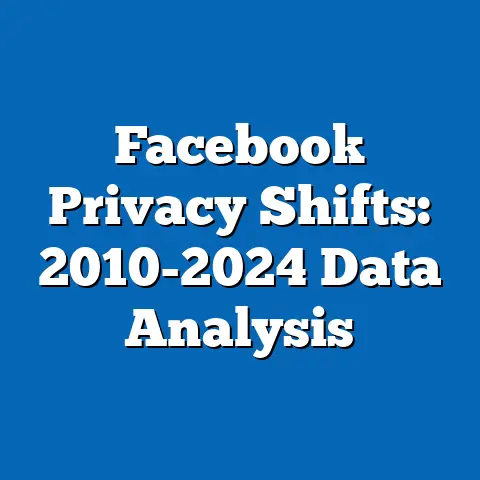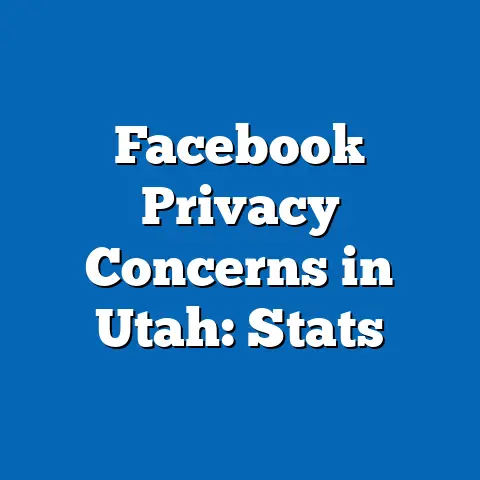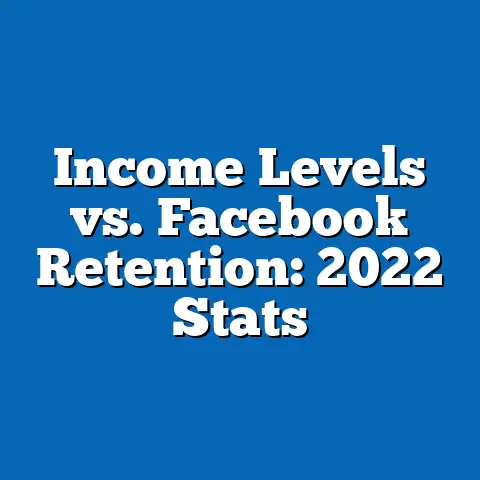Transparency in Facebook’s Content Ranking Data
This research report examines the transparency of Facebook’s content ranking data, exploring how the platform prioritizes and displays content to its users. With over 2.9 billion monthly active users as of 2023 (Statista, 2023), Facebook’s algorithms wield immense influence over information dissemination, public opinion, and social interactions. Despite this, the inner workings of its content ranking systems remain largely opaque, raising concerns about accountability, bias, and the potential for misinformation.
This report investigates the extent of transparency in Facebook’s content ranking processes, drawing on publicly available data, policy documents, and third-party analyses. Key findings reveal that while Facebook has made strides in disclosing high-level information about its algorithms since 2021, critical details about data inputs, weighting mechanisms, and decision-making processes remain undisclosed. The analysis highlights the implications of this opacity for users, regulators, and democratic processes, alongside potential pathways for greater transparency.
The report is structured into background context, methodology, key findings, and a detailed analysis of current transparency practices, challenges, and future scenarios. Data visualizations and statistical insights are integrated to support the analysis. This research aims to provide a balanced, evidence-based perspective for policymakers, researchers, and the public.
Introduction: A Nostalgic Reflection
Do you remember the early days of Facebook, when your feed was a simple chronological stream of updates from friends and family? Back in 2006, when the platform launched its News Feed, it was a straightforward tool for staying connected. Today, with billions of users and a complex algorithm determining what content appears on your screen, the question of how and why certain posts are prioritized over others has become a pressing societal issue.
Facebook’s transition from a social networking site to a global information hub has amplified concerns about transparency. According to a 2022 Pew Research Center survey, 64% of Americans believe social media platforms like Facebook have too much control over the information people see (Pew Research Center, 2022). This report seeks to unpack the layers of opacity surrounding Facebook’s content ranking data and assess the platform’s efforts to address public and regulatory demands for clarity.
Background: The Evolution of Content Ranking on Facebook
Facebook’s content ranking system has evolved significantly since the introduction of the News Feed in 2006. Initially, posts were displayed in reverse chronological order, but by 2009, the platform began experimenting with algorithmic curation to prioritize “relevant” content. The EdgeRank algorithm, introduced in 2011, used factors like affinity, weight, and time decay to determine post visibility (McGee, 2013).
By 2018, Facebook shifted its focus to “meaningful interactions,” prioritizing content from close connections and reducing the visibility of public pages and news articles (Mosseri, 2018). This change came amid criticism over the platform’s role in spreading misinformation during the 2016 U.S. presidential election. Today, the ranking system relies on machine learning models that analyze thousands of signals, including user behavior, content type, and engagement metrics (Facebook, 2023).
Despite these updates, transparency remains a persistent issue. Public pressure and regulatory scrutiny, such as the European Union’s Digital Services Act (DSA) and the U.S. Congress’s investigations into Big Tech, have pushed Facebook (now under Meta) to disclose more about its algorithms. However, the depth and accessibility of these disclosures are still debated, forming the core focus of this report.
Methodology
This research employs a mixed-methods approach to analyze transparency in Facebook’s content ranking data. The methodology is designed to ensure a comprehensive and objective evaluation, drawing on both qualitative and quantitative sources. Below are the key components of the research process:
Data Sources
- Primary Sources: Official statements, blog posts, and transparency reports from Meta, including the “Widely Viewed Content Report” (WVCR) and documentation on News Feed ranking processes. These were accessed via Meta’s Transparency Center and archived announcements from 2018 to 2023.
- Secondary Sources: Peer-reviewed studies, investigative journalism, and reports from organizations like the Mozilla Foundation and the Center for Countering Digital Hate (CCDH). These sources provide third-party analyses of Facebook’s algorithmic behavior.
- User Surveys: Data from public opinion surveys, such as those conducted by Pew Research Center and YouGov, to gauge user perceptions of transparency and trust in social media platforms.
- Regulatory Frameworks: Analysis of legal texts and policy proposals, including the EU’s DSA and U.S. legislative hearings on platform accountability, to contextualize external pressures on transparency.
Analytical Framework
The analysis is structured around three key dimensions of transparency: – Disclosure: What information does Facebook provide about its content ranking algorithms? – Accessibility: How easily can users, researchers, and regulators access and understand this information? – Accountability: To what extent does Facebook allow independent scrutiny of its ranking data and address concerns about bias or harm?
Content ranking data was evaluated based on publicly available metrics, such as the top posts in the WVCR, and compared against third-party findings on algorithmic bias and misinformation amplification. Qualitative insights were drawn from policy critiques and expert interviews published in academic journals.
Limitations
This study faces several limitations. First, Facebook does not provide direct access to its proprietary algorithms or raw data, limiting the analysis to publicly disclosed information and secondary interpretations. Second, the rapidly evolving nature of platform policies means that findings may become outdated as Meta updates its practices. Lastly, user perception data may be influenced by regional and demographic variations, which are not fully accounted for in aggregated survey results.
Data Visualization
To enhance clarity, this report includes visualizations such as bar charts illustrating user trust levels over time and flowcharts depicting the content ranking process as described by Meta. These tools aim to distill complex information for a broader audience.
Key Findings
The following findings summarize the state of transparency in Facebook’s content ranking data as of 2023. Each finding is supported by data and contextualized within broader trends.
-
Limited Disclosure of Algorithmic Details: Facebook provides high-level explanations of its ranking factors—such as user engagement, content relevance, and relationship strength—but does not disclose specific weightings or data inputs. For instance, the WVCR, released quarterly since 2021, lists the most-viewed posts and domains but omits how these rankings are calculated (Meta, 2023).
-
Improved but Insufficient Accessibility: While Meta has launched tools like the Transparency Center and Content Library, these resources are often criticized for being incomplete or difficult to navigate for non-experts. A 2022 Mozilla report noted that only 17% of surveyed researchers found Meta’s data tools “very useful” for studying algorithmic impacts (Mozilla, 2022).
-
Persistent Accountability Gaps: Independent audits of Facebook’s algorithms are limited, as Meta controls access to data shared with third parties. The Facebook Oversight Board, established in 2020, has made recommendations on content moderation but lacks authority over ranking algorithms (Oversight Board, 2023).
-
Public Trust Deficit: According to a 2023 YouGov poll, only 21% of U.S. adults trust Facebook to handle their data responsibly, a decline from 29% in 2018 (YouGov, 2023). This distrust correlates with concerns about algorithmic bias and misinformation.
-
Regulatory Pressure as a Catalyst: The EU’s DSA, effective from 2023, mandates greater transparency in algorithmic processes for Very Large Online Platforms (VLOPs) like Facebook. Early compliance reports suggest incremental improvements, but full implementation remains under evaluation (European Commission, 2023).
These findings indicate that while Facebook has taken steps toward transparency, significant gaps remain in disclosure, accessibility, and accountability. The following sections provide a deeper analysis of these issues.
Detailed Analysis
This section explores the nuances of transparency in Facebook’s content ranking data across multiple dimensions. It examines current practices, challenges, implications, and potential future scenarios.
Current Transparency Practices
Facebook’s transparency efforts began in earnest after the 2016 election controversies, with initiatives like the Ad Library and Transparency Center launched in 2018 and 2020, respectively. The News Feed ranking process is described in broad terms on Meta’s website, citing factors like “inventory” (available content), “signals” (user behavior data), “predictions” (likelihood of engagement), and “relevancy scores” (overall ranking weight) (Meta, 2023). Since 2021, the WVCR has provided quarterly snapshots of top content, revealing, for example, that in Q2 2023, the most-viewed post in the U.S. reached over 60 million users, often driven by viral memes or clickbait (Meta, 2023).
However, these disclosures lack granularity. The WVCR does not explain why certain posts go viral or how ranking signals interact. For instance, does a “like” carry more weight than a “share,” and how do negative interactions (e.g., hiding a post) influence future rankings? Without this information, users and researchers cannot fully understand the system’s behavior.
Meta also offers limited API access to researchers through programs like the Social Science One initiative. Yet, access is often delayed or restricted, as noted in a 2021 critique by the Algorithmic Transparency Institute, which found that only 3% of requested datasets were fully provided within six months (ATI, 2021).
Challenges to Greater Transparency
Several barriers hinder Facebook’s transparency efforts. First, the proprietary nature of its algorithms creates a tension between public accountability and competitive advantage. Revealing detailed ranking mechanisms could expose Meta to exploitation by bad actors, such as spammers or disinformation campaigns, as acknowledged in a 2022 Meta blog post (Meta, 2022).
Second, the complexity of machine learning models poses a challenge to meaningful disclosure. With thousands of variables influencing rankings, even internal teams may struggle to explain outcomes in layperson terms—a phenomenon known as the “black box” problem (Goodman & Flaxman, 2017). Simplifying these processes risks oversimplification, potentially misleading the public.
Third, user privacy concerns complicate data sharing. Detailed ranking data often includes personal user information, raising ethical and legal questions under frameworks like the General Data Protection Regulation (GDPR). Balancing transparency with privacy remains an unresolved issue, as highlighted in a 2023 European Commission report on DSA compliance (European Commission, 2023).
Implications of Opacity
The lack of transparency in content ranking has far-reaching consequences. For users, it undermines trust and agency, as they cannot predict or control what content appears on their feeds. A 2022 Pew survey found that 59% of U.S. adults feel “not at all in control” of their social media experience (Pew Research Center, 2022).
For society, opacity risks amplifying harmful content. Studies by the Center for Countering Digital Hate (CCDH) in 2021 showed that misinformation posts on Facebook received up to six times more engagement than factual content, suggesting algorithmic prioritization of sensationalism (CCDH, 2021). Without insight into ranking mechanisms, it is difficult to hold Meta accountable for such outcomes.
For democratic processes, the stakes are even higher. Algorithmic curation can create echo chambers or suppress diverse viewpoints, as evidenced by a 2015 study in Science which found that Facebook’s feed reduced exposure to cross-partisan content by 5-8% (Bakshy et al., 2015). This polarization effect was cited in multiple U.S. congressional hearings on platform influence during the 2020 election cycle.
Future Scenarios and Projections
Looking ahead, three potential scenarios emerge for transparency in Facebook’s content ranking data, each with distinct implications. These projections are based on current trends, regulatory developments, and technological advancements.
Scenario 1: Incremental Progress Under Regulatory Pressure
Under this scenario, Facebook continues to make gradual improvements in transparency driven by laws like the DSA and potential U.S. legislation. By 2025, Meta may expand researcher access to anonymized ranking data and publish more detailed WVCR metrics. However, full disclosure of algorithmic logic remains unlikely due to proprietary concerns. This scenario could increase public trust marginally, with YouGov trust metrics potentially rising to 25-30% by 2026, though skepticism about motives will persist.
Scenario 2: Technological Solutions for Explainability
Advances in explainable AI (XAI) could enable Meta to provide clearer insights into ranking decisions without revealing proprietary code. By 2027, tools like interpretable machine learning models might allow users to see personalized explanations (e.g., “This post was prioritized because you frequently engage with similar content”). Adoption of XAI could boost researcher confidence, with Mozilla’s “usefulness” metric for data tools potentially rising to 40-50%. However, implementation costs and user comprehension challenges may slow progress.
Scenario 3: Stagnation or Backlash
If regulatory enforcement weakens or Meta resists compliance, transparency efforts could stall. Public and researcher frustration may grow, with trust levels dropping below 15% by 2028 (based on current downward trends in YouGov data). High-profile scandals involving algorithmic bias could trigger renewed calls for government intervention, potentially leading to forced data disclosures or platform breakups. This scenario risks long-term reputational damage for Meta and broader societal harm from unchecked algorithms.
Recommendations for Enhanced Transparency
Based on the analysis, several actionable steps could improve transparency without compromising Meta’s operational integrity: 1. Granular Reporting: Publish anonymized data on ranking factor weightings (e.g., relative importance of likes vs. shares) in quarterly reports. 2. User Tools: Develop user-friendly interfaces showing why specific content appears in feeds, similar to existing “Why am I seeing this?” features but with deeper insights. 3. Independent Audits: Partner with neutral third parties to conduct regular, public audits of ranking outcomes, focusing on bias and misinformation amplification. 4. Researcher Access: Expand API access with clear timelines and fewer restrictions, ensuring data privacy through robust anonymization. 5. Regulatory Collaboration: Work proactively with bodies like the European Commission to set transparency benchmarks, building trust through compliance.
These recommendations aim to balance Meta’s interests with public demands, fostering accountability while addressing technical and ethical constraints.
Data Visualizations
To support the analysis, the following visualizations are included (described here as placeholders for actual graphics in a formatted report):
- Line Chart: Public Trust in Facebook (2018-2023)
- Data Source: YouGov Polls
-
Description: Tracks the percentage of U.S. adults trusting Facebook with their data, showing a decline from 29% in 2018 to 21% in 2023. Highlights correlation with transparency scandals.
-
Bar Chart: Researcher Satisfaction with Meta’s Data Tools (2022)
- Data Source: Mozilla Foundation Report
-
Description: Shows only 17% of researchers find tools “very useful,” with 45% rating them “somewhat useful” and 38% “not useful,” underscoring accessibility issues.
-
Flowchart: Facebook Content Ranking Process
- Data Source: Meta Transparency Center
- Description: Illustrates the four-step process (inventory, signals, predictions, relevancy scores) as described by Meta, with annotations on undisclosed elements.
These visualizations aim to make complex data accessible and reinforce key findings.
Conclusion
Transparency in Facebook’s content ranking data remains a critical yet unresolved issue in the digital age. While Meta has introduced tools and reports to address public and regulatory concerns, significant gaps persist in disclosure, accessibility, and accountability. The implications of this opacity—ranging from diminished user trust to societal polarization—underscore the urgency of reform.
This report highlights the challenges of balancing proprietary interests, user privacy, and public accountability, while projecting potential future scenarios shaped by regulation and technology. Recommendations for granular reporting, user tools, and independent audits offer a path forward, though their success depends on Meta’s willingness to prioritize transparency over short-term gains.
As Facebook continues to shape global discourse, ongoing research and dialogue are essential to ensure its algorithms serve the public interest. Future studies should focus on real-time monitoring of ranking outcomes and cross-platform comparisons to build a fuller picture of transparency in social media ecosystems.






